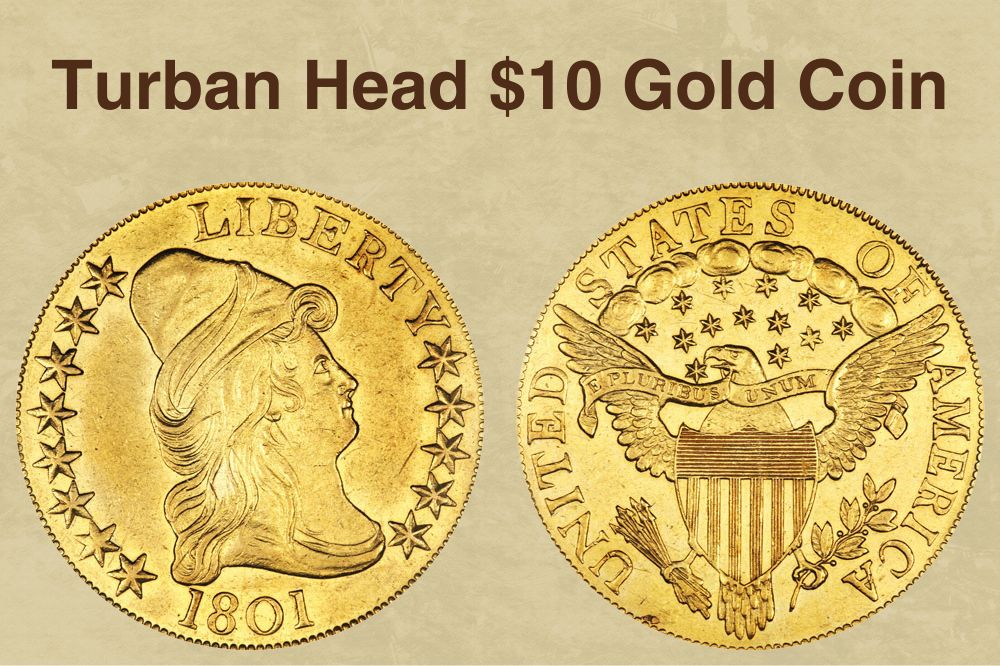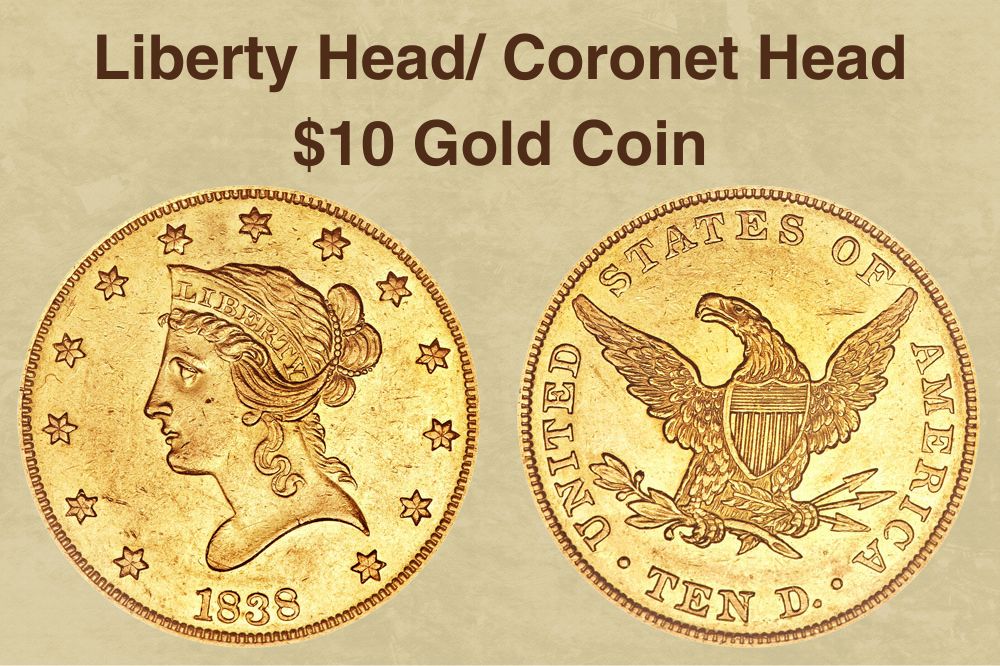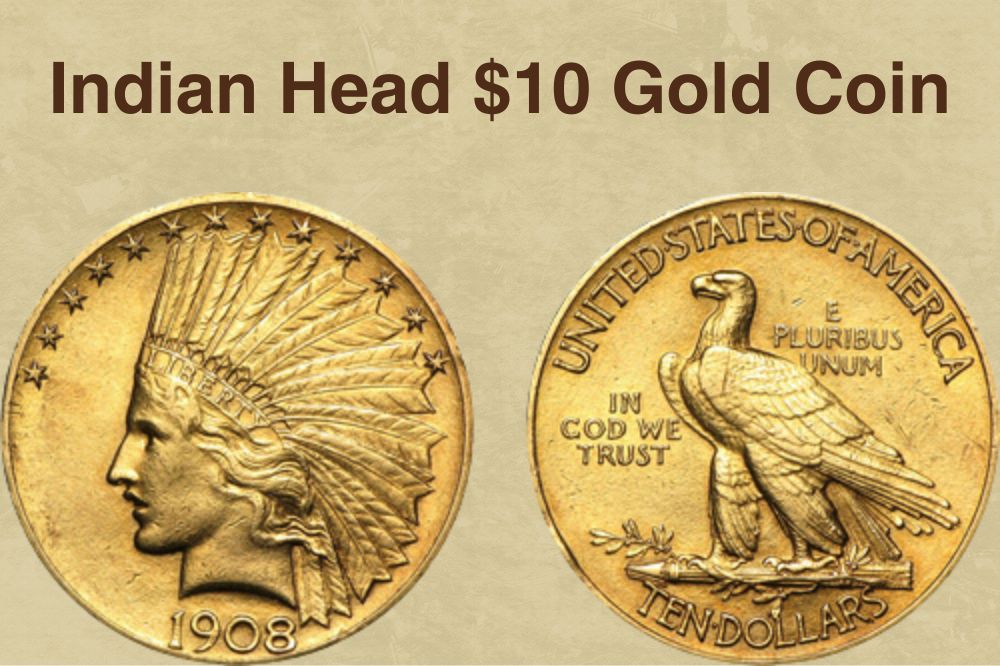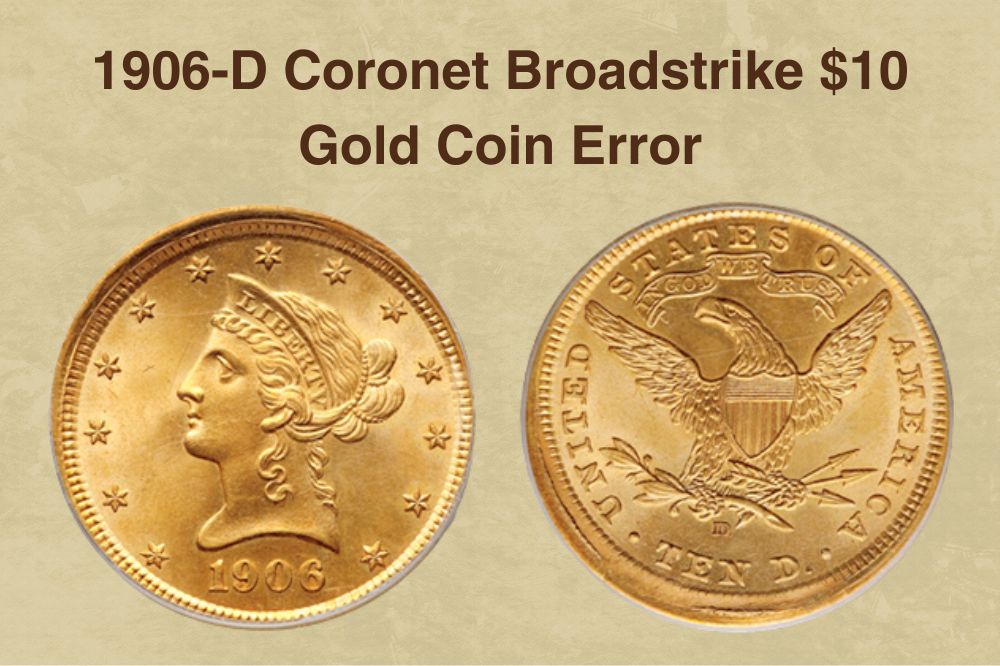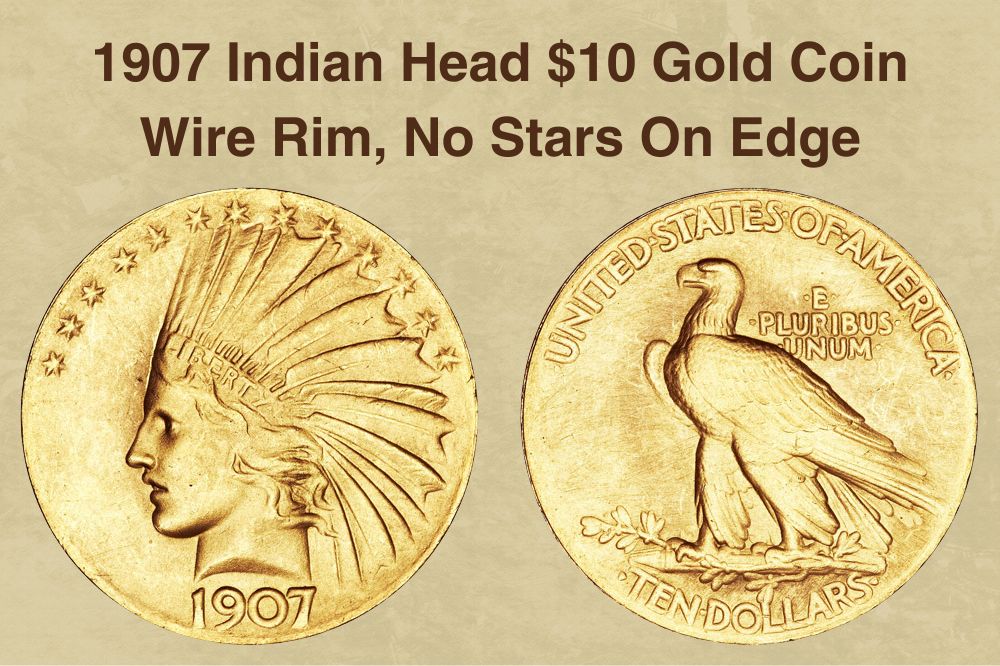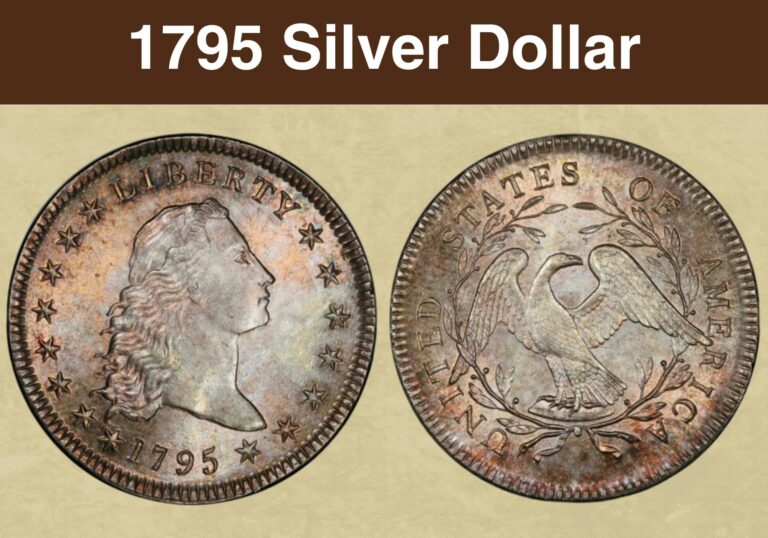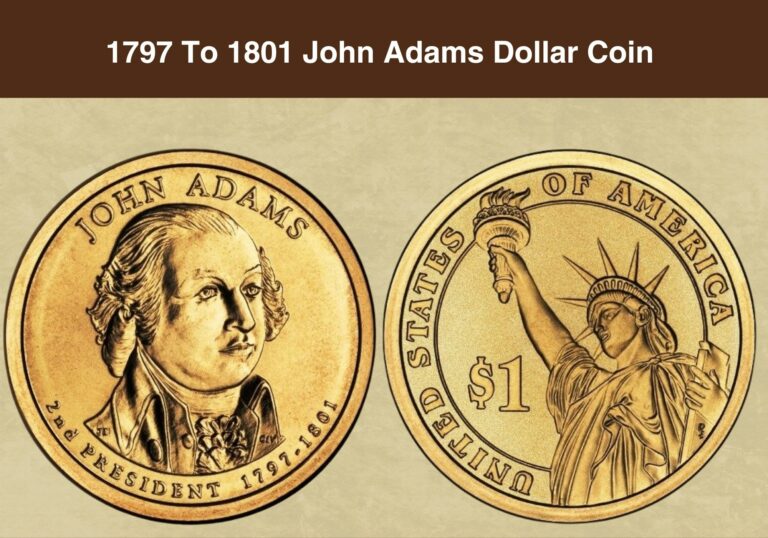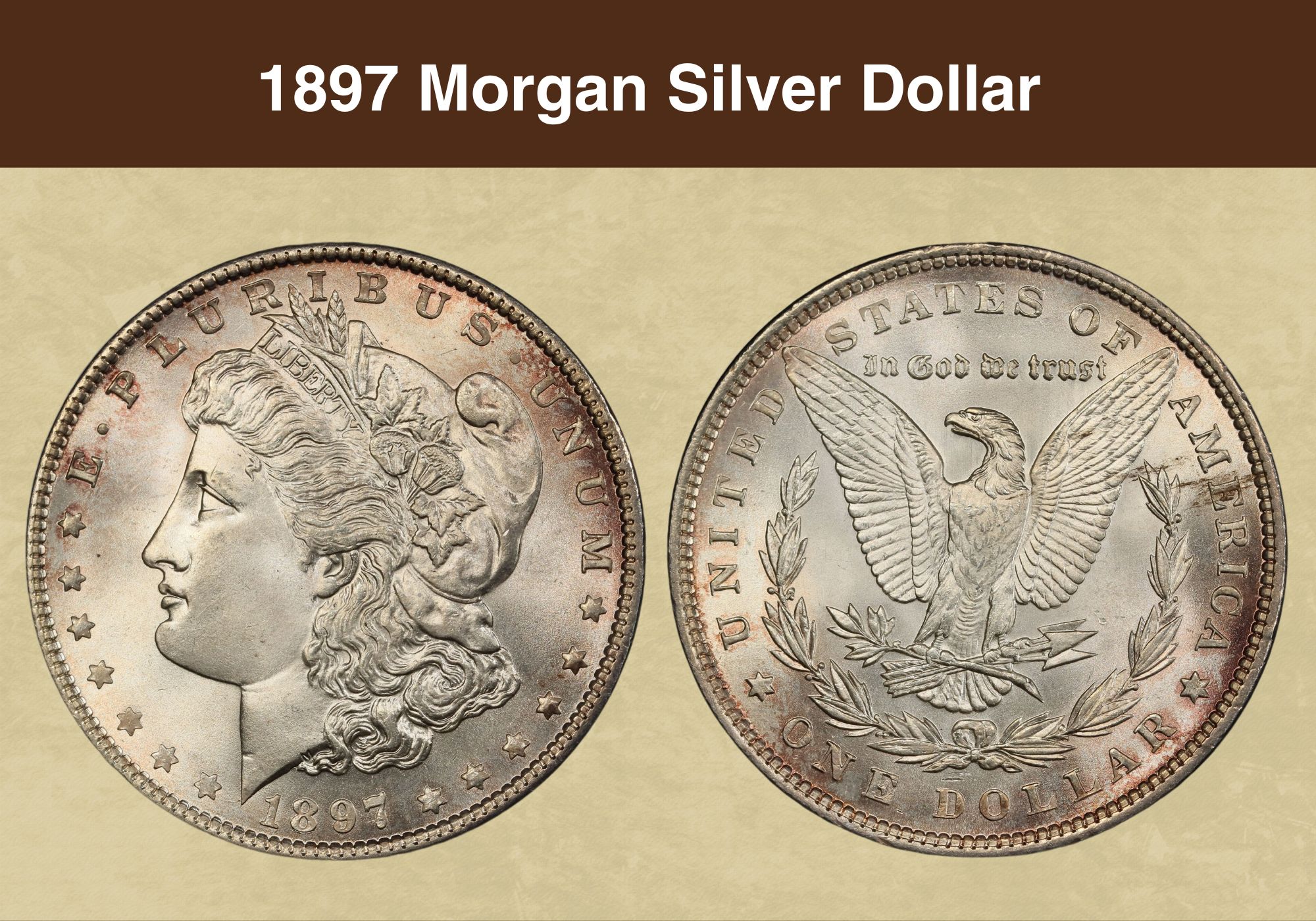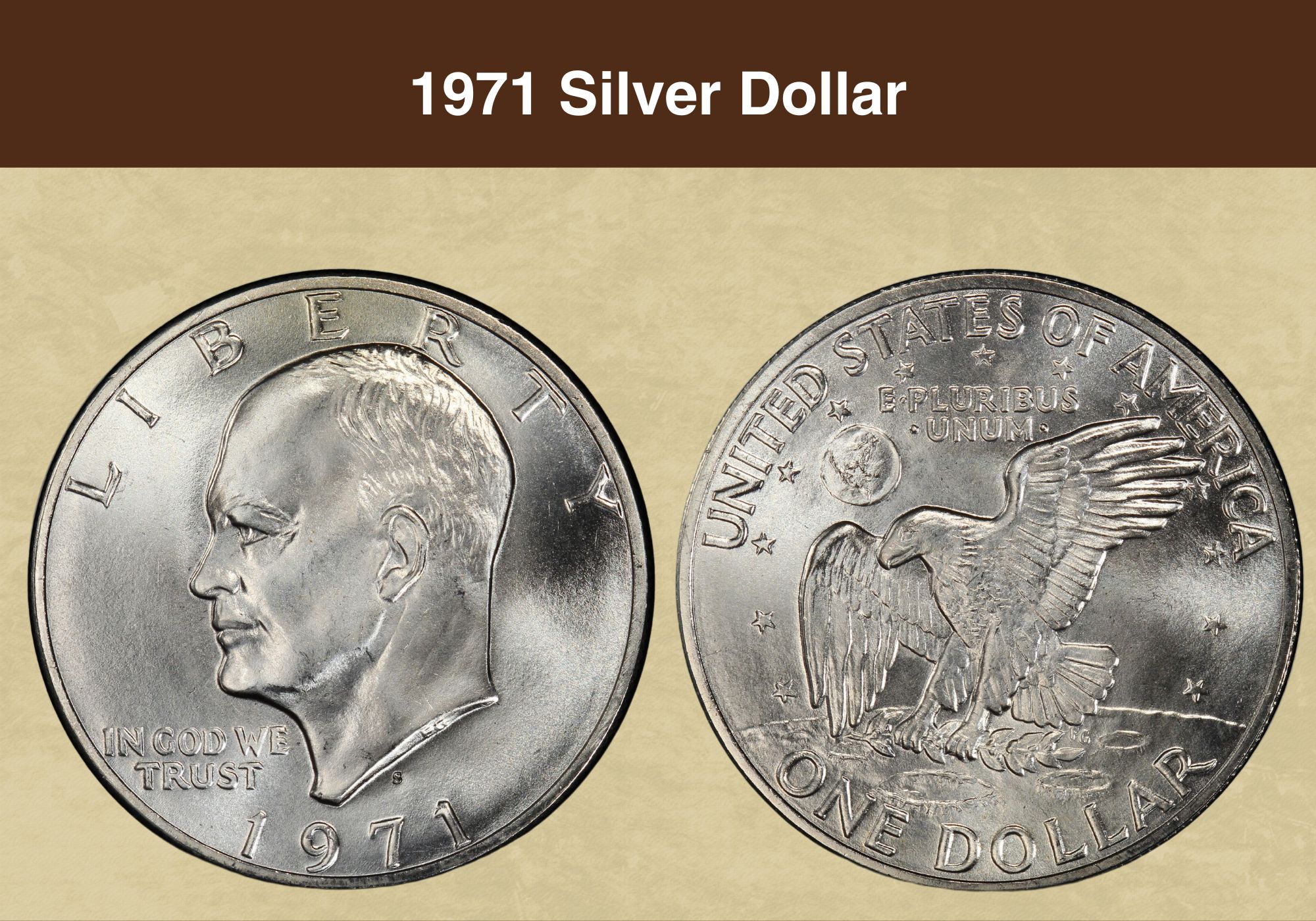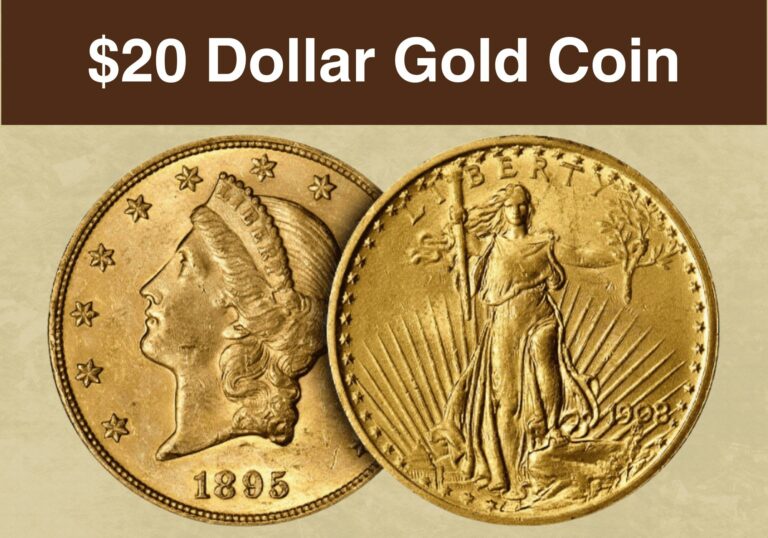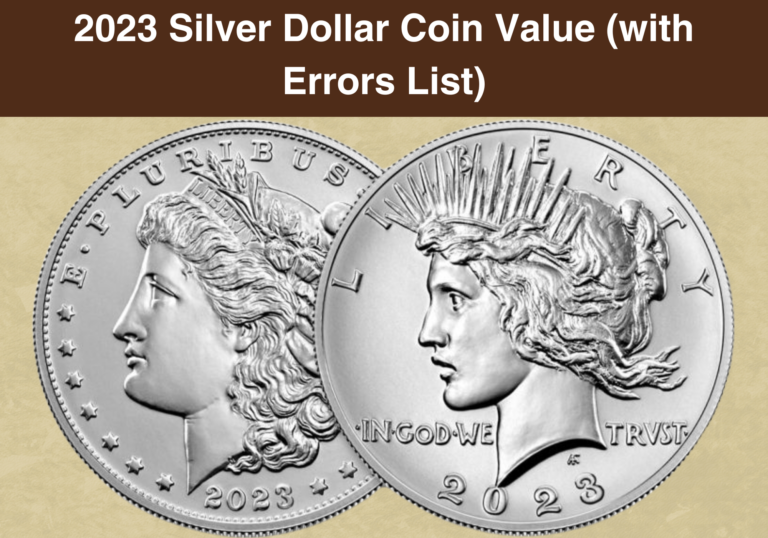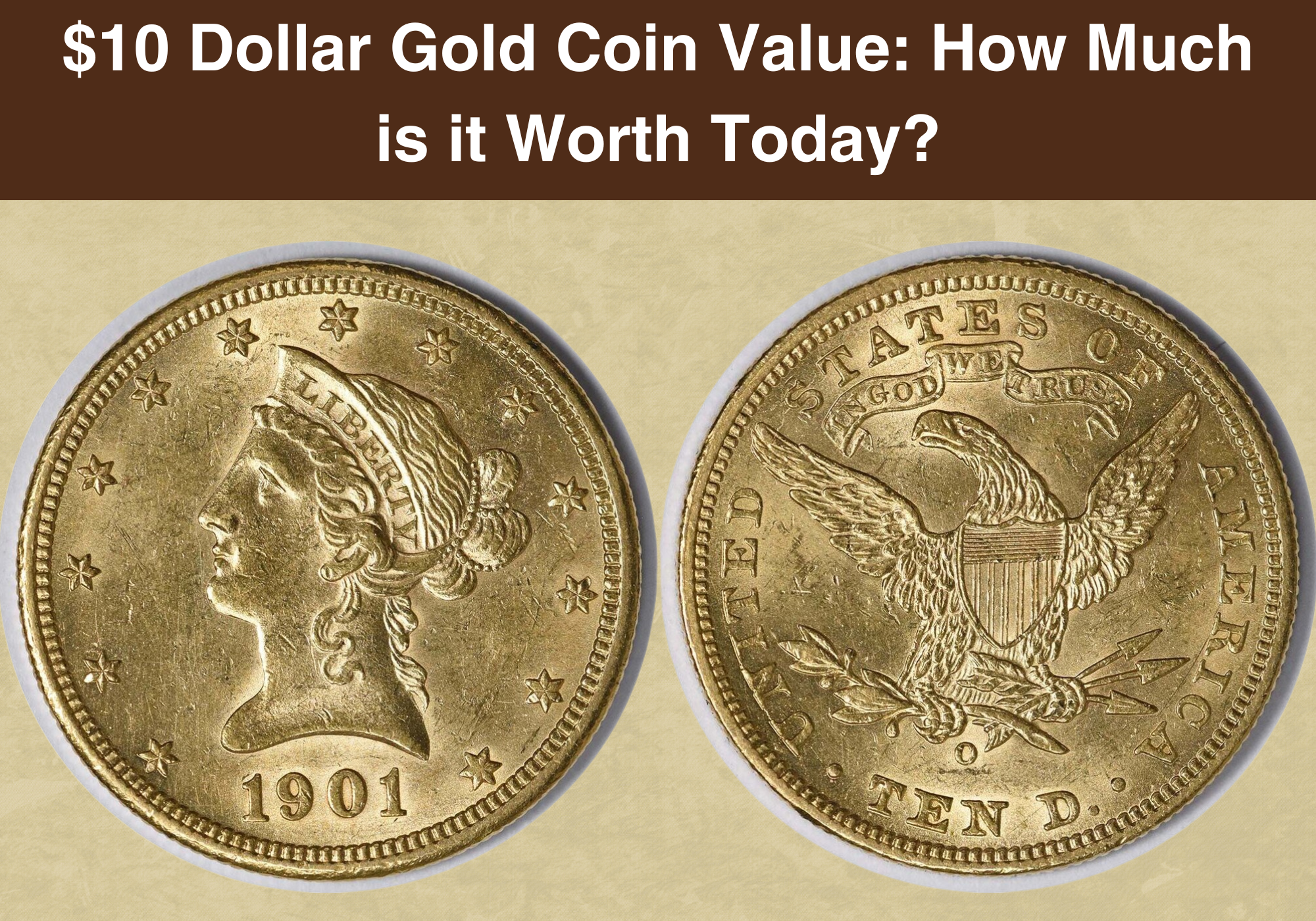
Coin Value Contents Table
- 10 Dollar Gold Coin Value Chart
- History of the 10 Dollar Gold Coin
- Features of the 10-Dollar Gold Coin
- 10 Dollar Gold Coin Value Guides
- Turban Head $10 Gold Coin Value
- Liberty Head $10 Gold Coin Value
- Indian Head $10 Gold Coin Value
- 10 Dollar Gold Coin Grading
- 10 Dollar Gold Coin Errors
- Where To Sell Your $10 dollar gold coin?
- FAQS
Are you curious about the value of old coins, such as the 10-dollar gold coin?
Do you want to know how much these coins might be worth?
We wrote this guide just for you, explaining everything you need to know about the $10 gold coin value.
Also known as the Eagle, this was among the earliest United States coins, making it historically and numismatically significant.
Whether you are looking to buy or sell, you will find this 10-dollar gold coin value guide helpful. We’ll explore the coin’s history, unique features, and minting errors that might be worth a fortune.
You will also learn tips for grading your $10 gold coins and what to look for in an Eagle worth money.
So, let’s jump in and find out: How much is a 10-dollar gold coin?
10 Dollar Gold Coin Value Chart |
||||
| Gold Eagle | Good | Fine | Extremely Fine | Uncirculated |
| Draped Bust $10 (1795-1804) | $7400 | $10000 | $13300 | $305500 |
| Liberty Head $10 (1838-1907) | $1375 | $2900 | $3750 | $92500 |
| Indian Head $10 (1907-1933) | $1380 | $1405 | $1430 | $52500 |
History of the 10 Dollar Gold Coin
The United States Mint struck the 10-dollar gold coin from 1795 to 1933. This coin, also known as the Eagle, is the base unit for other gold coins, including the double eagle ($20), half eagle ($5), and quarter eagle.
This long-running series witnessed several design changes over the years. These changes can be broken down into three main categories: Turban Head, Liberty Head and Indian Head.
Each category has a subcategory of coins or varieties, which we will look at in the next section.
Features of the 10-Dollar Gold Coin
Let’s now examine the features of all three types of 10-dollar gold coins. Familiarizing yourself with these features will help you identify $10 gold coins that are worth money.
1. Turban Head $10 Gold Coin
The United States Mint created the Turban Head 10-dollar gold coin from 1795 to 1804.
Designed by Robert Scot, the Chief Engraver of the U.S. Mint, this coin had one obverse and two reverse designs over its lifetime.
-
The Obverse of the $10 Gold Coin
The obverse design remained consistent throughout the years. On this side of the coin, we see Miss Liberty facing right and adorned in a hat; her hair swirled on the hat makes it look like she is wearing a turban.
The word LIBERTY appears at the top along the inner rim. On the right, you will notice six small stars and eight on the left.
The year date appears at the base under Liberty’s portrait.
-
The Reverse of the Turban Head $10 Gold Coin
From 1795 to 1797, the reverse shows a small eagle standing on a branch and clutching a wreath in its beak. The inscriptions UNITED STATES OF AMERICA encircle the coin’s circumference.
From 1798 to 1804, the Chief Engraver changed the coin’s design to feature a heraldic eagle inspired by the Great Seal of the United States.
The heraldic eagle is more glorious and majestic. The bird faces left and holds a scroll in its beak on which the motto E PLURIBUS UNUM is inscribed.
Above the eagle’s head, you will notice thirteen stars, and above these is a billow of clouds. The inscription UNITED STATES OF AMERICA is shown around the coin’s circumference.
The eagle’s chest is shielded, symbolizing sovereignty and the new nation’s readiness to defend the union. The eagle clutches an olive branch in one of its talons, representing peace, and arrows in the other, representing liberty.
-
Other Features of the Turban Head $10 Gold Coin
The Turban Head Eagle is made of 92% Gold and 10% Copper. The coin measures 33mm in diameter and weighs 17.5 grams.
2. Liberty Head/ Coronet Head $10 Gold Coin
Christian Gobretcht redesigned the eagle gold dollar in 1838, ushering in the Liberty Head, also known as the Coronet Head ten-dollar gold coin.
-
The Obverse of the Liberty Head $10 Gold Coin
On the obverse of the newly designed coin, we see Lady Liberty facing left with her hair held up. She sports a coronet with LIBERTY etched on it.
Thirteen stars appear around the circumference, and the date is shown at the bottom.
-
The Reverse of the Liberty Head $10 Gold Coin
From 1839 to 1866, the Liberty ten-dollar gold coins did not feature the motto E PLURIBUS UNUM on the reverse. These are known as the No Motto variety.
The designer introduced the motto IN GOD WE TRUST in 1866, which remained in place until 1908. These then became known as the WITH MOTTO variety.
The usual heraldic eagle clutches arrows in one talon and an olive branch in the other hand, symbolizing liberty and peace, respectively.
The words UNITED STATES OF AMERICA and the coin’s denomination, TEN D, also appear on the reverse.
-
Other Features of the Liberty Head $10 Gold Coin
The Liberty Head Eagle is made of 92% Gold and 10% Copper. The coin measures 33mm in diameter and weighs 17.5 grams.
3. Indian Head $10 Gold Coin
The Indian Head was the last design in the series, and the obverse and reverse designs underwent a major overhaul starting in 1907.
The Mint struck the Indian Head $10 gold coin continuously from 1907 to 1916 and then haphazardly until 1933. Augustus Saint-Gaudens designs the obverse and reverse designs.
-
The Obverse of the Indian Head $10 Gold Coin
The obverse shows the left-facing portrait of a Native American adorned in a feathered headdress on which the word LIBERTY is inscribed. The date appears at the bottom.
The inspiration behind the portrait elicited heated debates, with some claiming that the lady in the headdress was an Irish waitress known to Saint-Gaudens. Others claimed that the portrait represented Saint-Gaudens’ mistress, Davida Clark, although none of these claims were ascertained.
-
The Reverse of the Indian Head $10 Gold Coin
The Indian Head ten-dollar gold coin has two distinct reverse designs.
The early coins minted from 1907 to 1908 feature an eagle perched on a branch. The inscription UNITED STATES OF AMERICA appears at the top along the inner rim.
The motto E PLURIBUS UNUM is shown on the right next to the bird, while the denomination TEN DOLLARS is inscribed at the base. These are known as No Motto coins.
From 1908 to 1933, the motto IN GOD WE TRUST was included on the right. The rest of the design elements remained the same, ushering in the With Motto Indian Head $10 gold coins.
-
Other Features of the Indian Head $10 Gold Coin
The Indian Head Eagle is made of 92% Gold and 10% Copper. The coin measures 33mm in diameter and weighs 17.5 grams.
10 Dollar Gold Coin Value Guides
So, how much is a 10-dollar gold coin? As we’ve seen, this is a wide-ranging series with numerous varieties, dates, and mint marks.
Some dates are scarce in mint condition, while a few others are abundant, all of which affect the coin’s value.
Let’s look at the value of the various coins under the three categories.
Turban Head $10 Gold Coin Value
The value of Turban Head Eagles varies greatly across the years.
For example, a 1795 $10 Gold Eagle is valued at between $22500 and $140,000 in circulated condition but can fetch as much as $3250000 in mint, uncirculated condition.
At the same time, a Turban Head $10 gold coin dated 1804 can fetch as much as $31500 to $85000 in circulated condition. Circulated specimens, which are extremely scarce, can sell for up to $565000.
Look out for rare dates in this design category; these might be worth a fortune.
Liberty Head $10 Gold Coin Value
The Liberty Head $10 Eagles, struck from 1838 to 1907, are part of one of the longest-running series. As you might expect, values vary widely from date to date.
Be on the lookout for rare dates such as the 1873, 1874, 1876, and 1877 dollars. These dates are not only rare but also highly valued.
With Liberty Head $10 Eagles, expect to pay anything from $1650 to $57,500 for circulated specimens and as much as $150,000 or more for uncirculated specimens.
Indian Head $10 Gold Coin Value
Although mint records show that as many as 13 million Indian Head Eagles were struck, the truth is that the Mint melted most of these coins, especially the 1920s set.
Only a small number of 1930s Indian Head Eagles have been discovered over the years, making these coins some of the rarest in the entire series.
Key dates to watch out for include the 1909-D, 1911-D, 1913-S and the 1915-S. The 1926 and 1932 issues are the most common to find in mint state.
Values will vary from date to date. For example, a 1907 $10 Eagle with a wire rim can sell for $13500 to $45500 in circulated condition but can bring in as much as $1,000,000 in uncirculated condition.
Meanwhile, a 1926 $10 Indian Head Gold coin, one of the most common dates across all grades, can fetch between $1370 and $1465 in circulated condition. An uncirculated specimen can sell for up to $28,500.
10 Dollar Gold Coin Grading
Grading a 10-dollar gold coin requires attention to factors such as the presence of hairlines, contact marks, and luster.
On circulated Eagles, which are by far the most common in the series, you will notice several contact marks, dings, and flaws, especially on the high contact points on the reverse and obverse.
Eagle gold coins in mint state are rare in most dates. These are identifiable by the presence of luster throughout the coin. On some coins, the luster or shine might be sharper depending on how well the coin was preserved.
Check out this video for more tips on how to grade $10 gold coins and estimate their value.
10 Dollar Gold Coin Errors
As vast and varied as the United States Gold Coin series was, major errors were very few. Consider yourself lucky if you come across a $10 gold eagle with a significant error—depending on its condition, this coin might be worth a fortune.
Here are key errors and dates to look out for when determining a $10 gold coin worth money.
1906-D Coronet Broadstrike $10 Gold Coin Error
A broadstrike error occurs when a planchet is struck outside the collar during minting. This can happen if the collar is misaligned or improperly positioned, spreading the planchet unevenly and distorting the coin’s shape.
A rare 1906-D Coronet $10 gold coin was discovered, spotting a broadstrike error causing an uncentered obverse and a raised lip surface. Graded MS64 by the PCGS, this error sold for an impressive $10,800.
1907 Indian Head $10 Gold Coin Wire Rim, No Stars On Edge
Indian Head ten-dollar gold coins were first minted without a rim and were aptly known as wire rim coins. These coins usually feature 46 raised stars along the rim, but the US Mint struck two pattern coins to test how a coin with a plain edge would look.
One of the coins was issued to the President, and the other was given to the coin’s designer, Saint-Gaudens. One of these coins is known to exist and was sold for $195,500 in a 2003 Heritage Auction and then again in 2008 and 2010 for $322,000 and $359,375, respectively. There is still a chance that the other 1907 Indian Head $10 Eagle with a wire rim and no stars will resurface one day.
Where To Sell Your $10 dollar gold coin?
Now that you know the value of your coins, do you know where to sell those coins online easily? Don’t worry, I’ve compiled a list of these sites, including their introduction, pros, and cons.
Check out now: Best Places To Sell Coins Online (Pros & Cons)
FAQS
How much gold is in a $10?
The $10 Eagles contain approximately 90% pure gold. In particular, the Mint used 16.04g or 0.52 troy ounces of gold to produce each coin in the entire series from 1795 to 1933. This large amount of gold was possible due to the gold rush at the time.
Is the $10 Eagle the largest U.S. gold coin?
No. Despite being one of the larger denomination coins of its time, the $10 Eagle is not the largest in the country’s coinage history. In 2015, the U.S. Mint issued a $100 American Liberty gold coin, the largest or highest denomination of U.S. coins ever struck. The $100 coin was struck in 99% pure gold.
Are U.S. Gold coins pure gold?
No. Not all so-called gold coins comprise pure gold; in fact very few do. The American Buffalo Gold Bullion Coins are the only U.S. coins known to contain 99.99% or 24-karat gold. Although these are legal tender with a $50 face value, they are considered investment-grade coins, and the U.S. Mint doesn’t sell them to the public.

